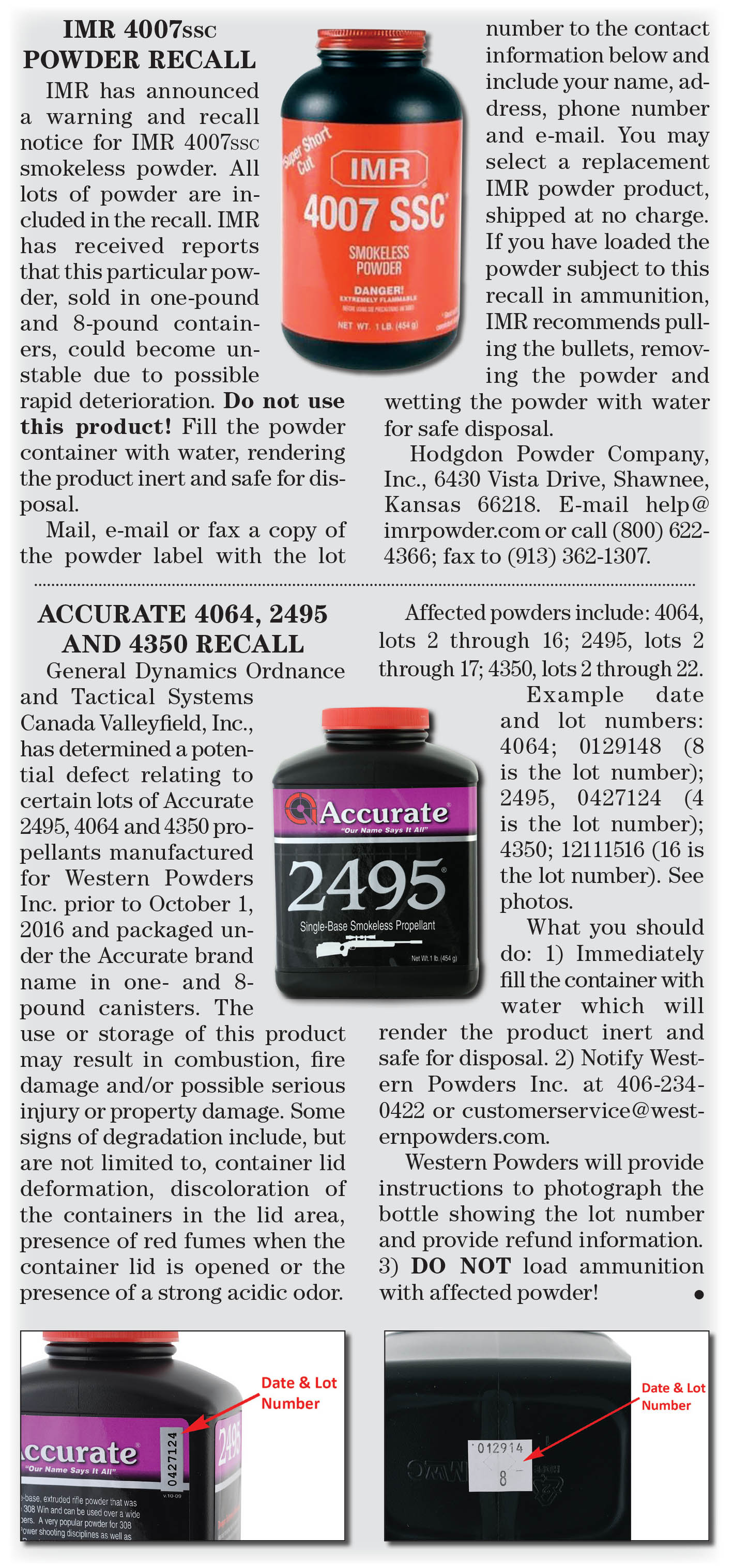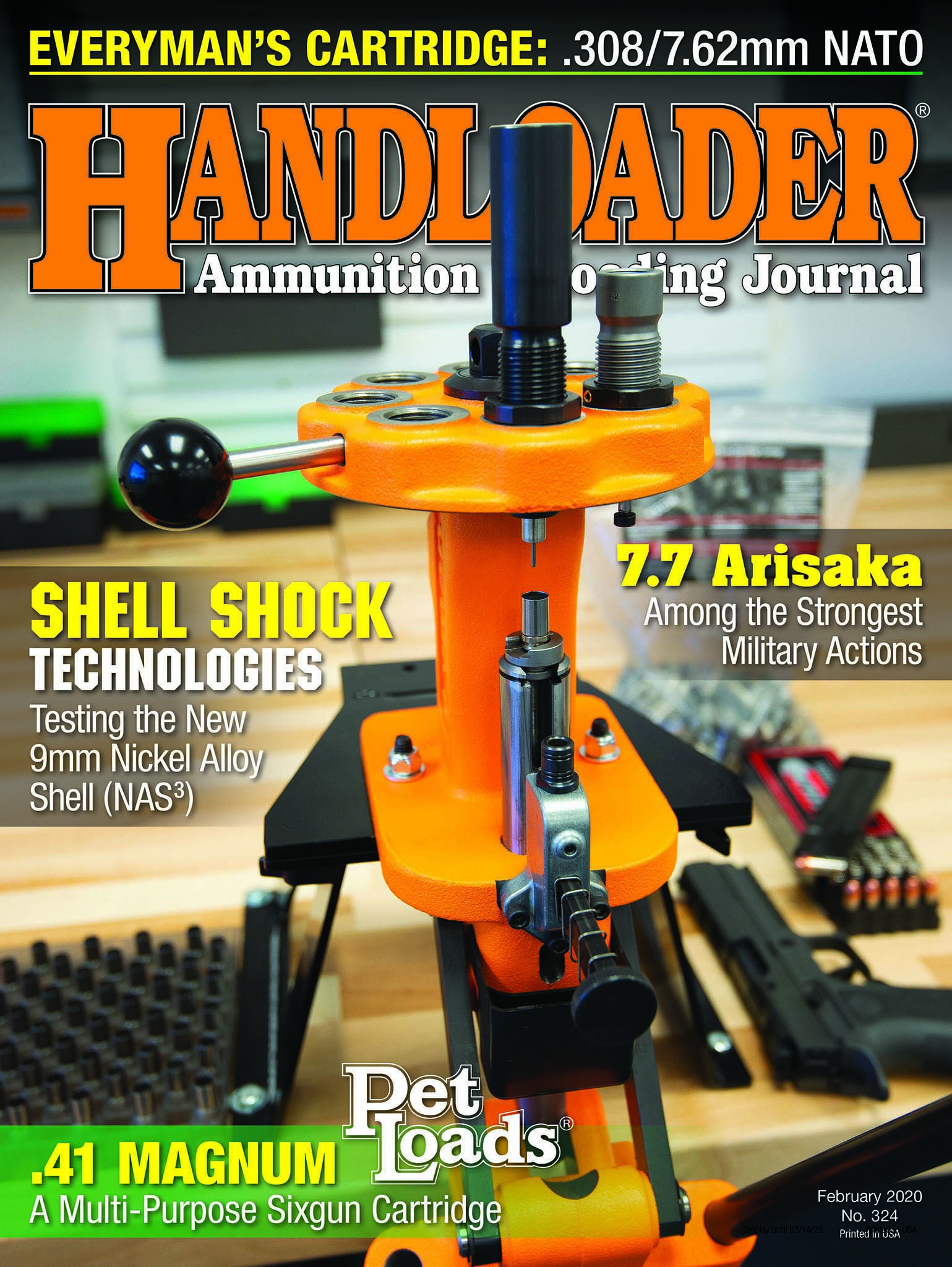Propellant Profiles
Ramshot LRT
column By: Rob Behr | February, 20
My first day testing Ramshot LRT (Long Range Tactical) at a local range, I was approached by a friendly man who asked what I was shooting. I had just shot a three-round string through a 7mm Shooting Times Western
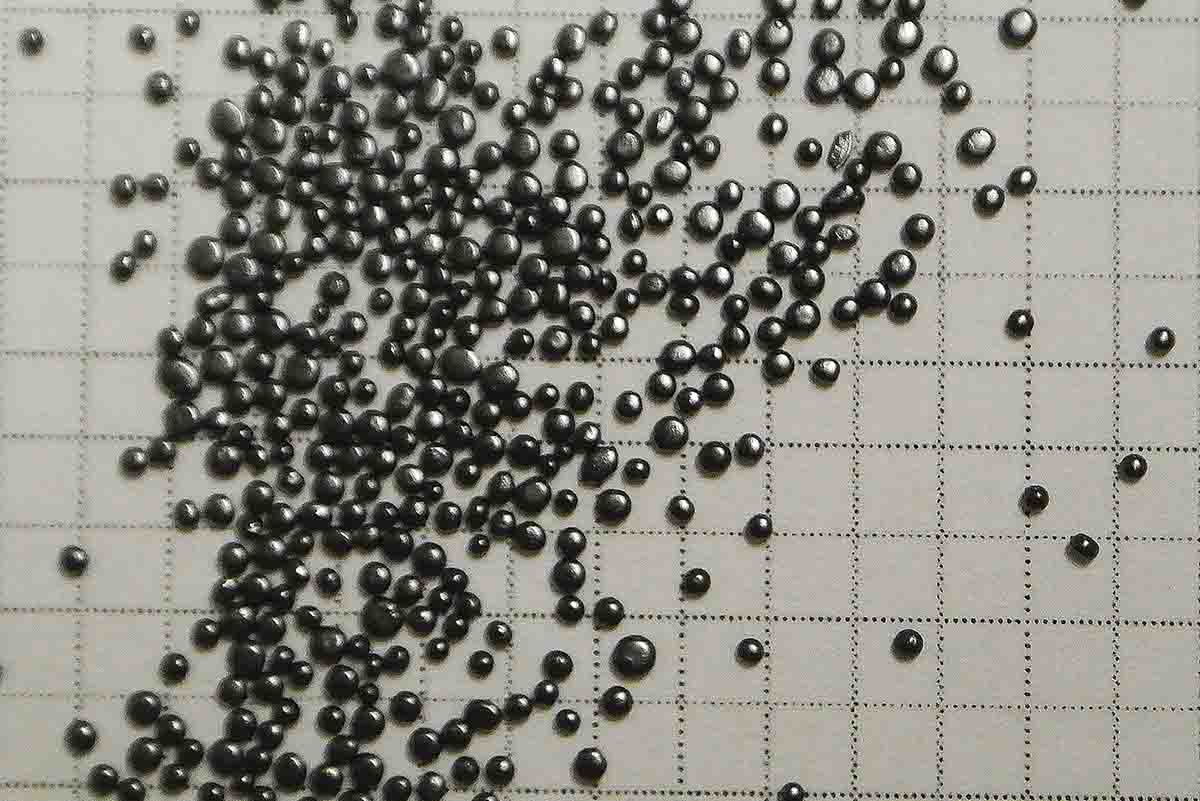
(STW) and was letting the barrel cool, so talking to this amiable guy seemed a good way to pass the time. I told him I was testing a new spherical powder with a burn rate similar to Retumbo. He looked at me blankly for a moment and said, “Ball powders get wonky sometimes,” and wandered back to his bench. I thought about what he’d said while I wrote up notes on that last string.
The data showed LRT had just produced three shots with an extreme velocity spread of 17 fps and made a group I could hide with a quarter. Times change and technology moves forward, but only rarely are they able to overtake hidebound beliefs. The fact is, modern spherical powders compete very well with the best extruded propellants.
Like most of the Ramshot powder line, LRT is manufactured for Western Powders by PB Clermont in Engis, Belgium. As a double base propellant, it uses two energetic materials, nitrocellulose (about 80 percent of its total weight) and nitroglycerine (10 percent). Its round grains averaged .027 inch with a bulk density of about 992 grams per liter. The compact size and shape of the powder granules create very dense charge masses because, unlike extruded powders, each sphere stacks efficiently inside the cartridge. In the end, you can simply get more powder in the case while still operating within the Sporting Arms Ammunition Manufacturers Institute (SAAMI) pressure guidelines. These higher charges make LRT seem to be slower than advertised, but Western Powders head ballistician Keith Anderson assured me the burn rate is comparable to Retumbo.
Western Powders Handloading Guide, Edition 7.0 lists data for seven cartridges using LRT, with a handful more offered via online updates. Predictably, most of these were for some pretty big boomers, including the .338 Lapua and .300 Norma Magnums. Roy Weatherby’s favorite .257 Weatherby Magnum also made the list with some truly impressive velocities for bullets up to 120 grains. I was especially pleased to find data for the 6.5x284 Norma. This cartridge typically performs well with very slow-burning powders even though, at 66 grains of water to overflow, it is not overly blessed with capacity.
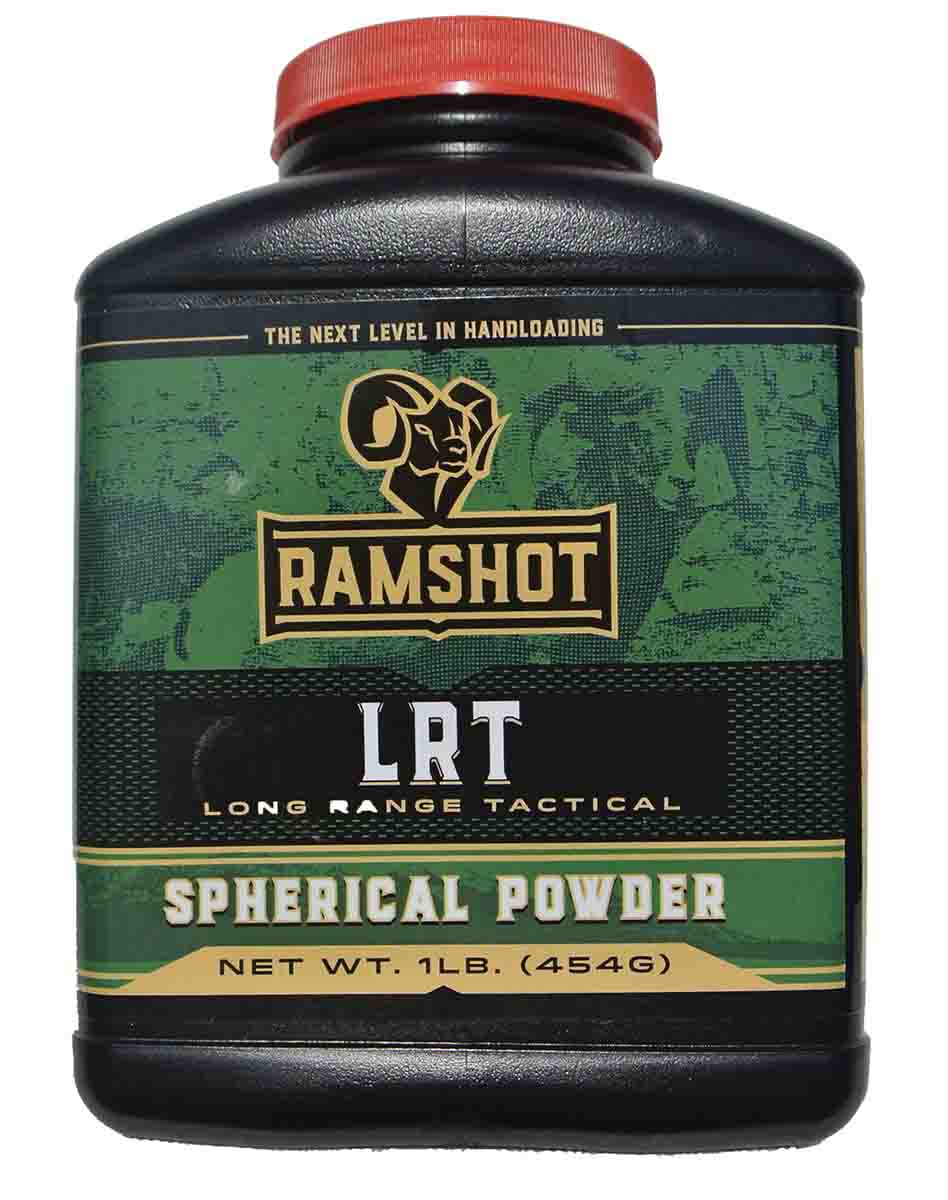
My Cooper is chambered in the original 6.5x284 Winchester wildcat, which is short-throated compared to the Norma chambering. After some initial testing, I settled on a mild and accurate load of 62.3 grains of LRT using a Federal 215M magnum primer and a Sierra 140-grain Game King SBT. This combination produced 2,739 fps from the 26-inch barrel.
With a smaller bore diameter and similar capacity to the 6.5x284, the .25-06 Remington looked like a good candidate for LRT. A custom Mauser with a 26-inch barrel took to LRT. Using Nosler 120-grain Partitions, the best groups were with 62.5 grains, which produced 3,020 fps. With that success, I moved on to the .270 Winchester using the same rational. I ran out of capacity at 63.1 grains using Nosler 160-grain Partitions. Average velocity was 2,544 fps from the Remington Gamemaster’s 22-inch barrel. LRT was just too slow-burning to produce top
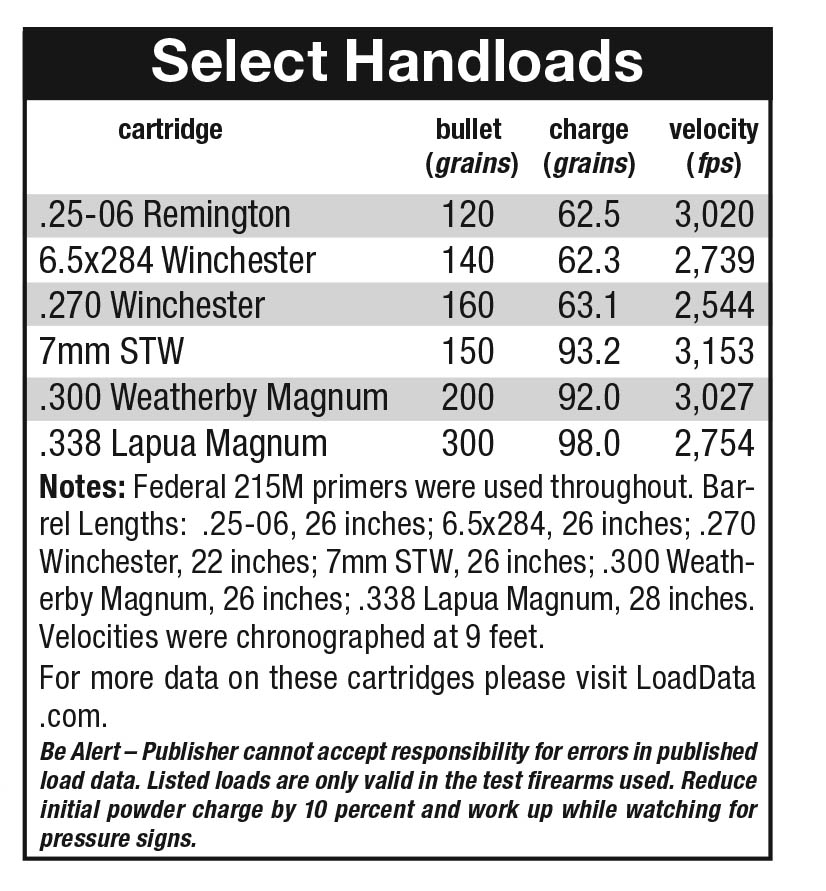
I am a big fan of sensible, well balanced cartridges but have to admit the STW has been my favorite open country hunting rifle for decades. Because of its very similar case capacity, Western’s published .28 Nosler data provided an excellent jumping-off point for experimenting with the STW. After testing using the rifles’ preferred Nosler 150-grain Ballistic Tip, I settled on 93.2 grains of LRT. Average velocity was 3,153 fps and accuracy was impressive enough that I re-zeroed the rifle to this load for hunting in the fall.
Friend Daryl Colvin was kind enough to volunteer his custom Remington 700 .300 Weatherby Magnum for testing. This rifle, using a chamber with limited freebore and a 26-inch barrel, produced 3,027 fps using Sierra 200-grain GameKings and 92-grains of LRT.
No test of LRT would be complete without adding a .338 Lapua to the mix. Mike Murphy, a ballistician for Western Powders, was willing to share his pet load for the company’s custom rifle. Murphy’s load uses 98 grains of LRT and a Sierra 300-grain MatchKing for an average velocity of 2,754 fps from the rifle’s 28-inch barrel.
As part of a campaign designed to show the viability of spherical powders at long range and in extreme temperatures, Western Powders is developing new testing procedures shot under controlled ambient conditions. I witnessed some of the initial testing and watched Murphy fire three groups using his accuracy load. The first three-shot group had been chilled overnight in a laboratory-grade freezer to 0 degrees Fahrenheit. The second was stored in the lab at an ambient temperature of 70 degrees Fahrenheit. The third had been warmed overnight at a stabilized 125 degrees Fahrenheit in a laboratory-grade oven. The average of these three groups was 2.174 inch at a range of 600 yards, making the combined group .36 MOA.
